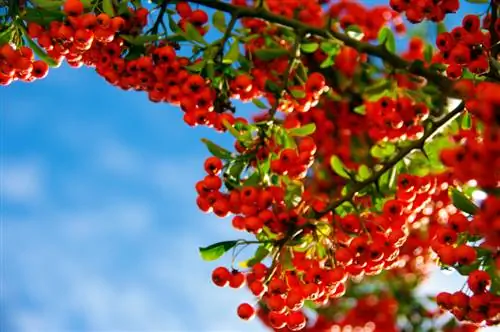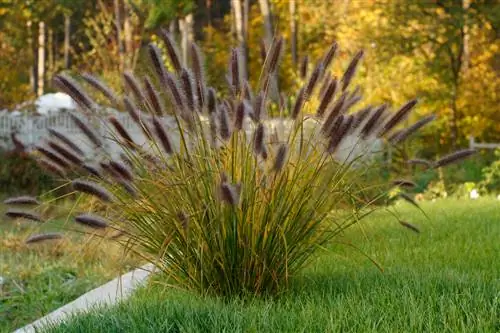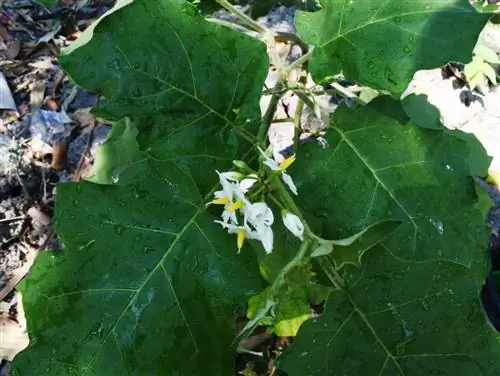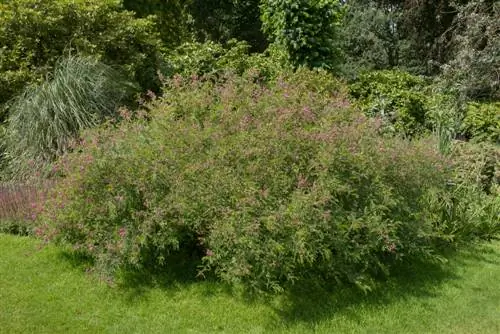- Author admin [email protected].
- Public 2023-12-16 16:46.
- Last modified 2025-01-23 11:20.
With its shiny, dark green leaves and bright red berries, the firethorn is an ornament for every garden. In spring, the thorny shrub is decorated with pretty white flowers, from which the brightly colored fruits develop from August onwards.
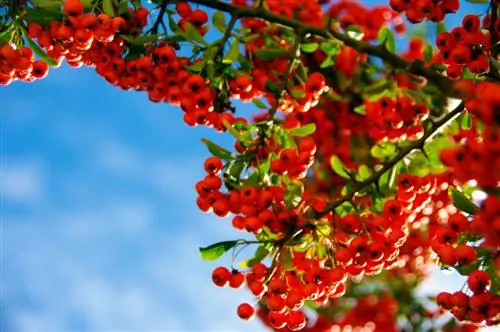
How do I care for a firethorn bush?
Firethorn care includes nutrient-rich, well-drained soil, sunny to partially shaded locations, spring fertilization with nitrogen-containing fertilizer or compost, occasional watering during long heat periods and pruning in February and after flowering in July. Frost-resistant varieties do not require winter protection.
Demands on the location
The firethorn requires nutrient-rich, water-permeable and humus-rich soil and sunny to partially shaded locations. The pH of the soil should be slightly acidic to alkaline. In contrast to other garden plants, the firethorn also thrives in cool and crowded places.
Care and fertilization
The firethorn is an undemanding tree that requires little care. The thorn bush rewards fertilization in spring with numerous flowers and abundant fruit sets. Nitrogen-containing, organic fertilizers or compost are well suited.
The drought-resistant plant survives without additional watering, even in dry summers. You should only wash the firethorn occasionally during long periods of heat.
Cutting
Short the firethorn at least once a year so that it does not grow sparsely and forms long, lateral shoots without branches.
- The best time for heavy pruning is February.
- Use sharp and clean rose scissors (€25.00 on Amazon) to shorten all branches without branches.
- A second cut is carried out after flowering in July.
- Be sure to watch out for breeding birds!
- Do not remove all flowers, otherwise hardly any fruit will form.
- Do not cut back in autumn to avoid frost damage.
You can shape firethorn hedges with hedge trimmers. When making this design cut, work very carefully so that no holes are left in the hedge.
Diseases and pests
The firethorn is a robust garden tree. If it feels comfortable in its location, the firethorn is rarely attacked by pests or diseases.
Waterlogging should, however, be avoided at all costs. Rotting then quickly occurs in the root area, which can cause massive damage to the plant.
Does the firethorn need winter protection?
Only plant winter-hardy firethorn varieties in the garden, as they do not require any additional winter protection. Since the tree does not shed its leaves in winter, it is somewhat sensitive to sunny winter days and subsequent frosty nights. To avoid drought damage, it makes sense to shade the plants to minimize the evaporation of water through the leaves.
Non-frost-resistant specimens should only be planted in pots and overwintered in a frost-free room.
Tips & Tricks
The firethorn has very hard and strong thorns that can lead to painful skin injuries. Therefore, avoid planting firethorn bushes near children's playgrounds.

